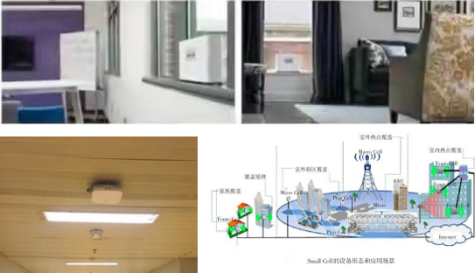A small cell is a type of base station equipment that is significantly smaller than traditional macro cells in terms of product form factor, transmission power, and coverage area. It can also be considered a low-power wireless access point that can use both licensed frequencies and unlicensed frequency access technologies such as Wi-Fi. The transmission power of small cells generally ranges from 0 mW to 5 W, with a coverage area of 10 to 200 meters.

The characteristics of small cells include miniaturization, low transmission power, good controllability, intelligence, and flexible networking.
Miniaturization: In terms of weight, small cells typically range from 2 to 10 kg.
Transmission Power: The power output generally falls between 50 mW and 5 W.
Networking: Small cells support backhaul via multiple technologies, including DSL, fiber, WLAN, and cellular.
Intelligence: They also feature SON (Self-Organizing Network) capabilities such as automatic neighbor recognition and self-configuration.
Small cells are compact and can be deployed flexibly, without being restricted by the site limitations of macro base stations. They can be strategically placed in densely populated urban areas to supplement macro base station coverage, address weak signal areas, and eliminate blind spots, ensuring high-quality signal delivery. In hotspot areas, due to their low power, small cells can implement frequency reuse within a smaller range, increasing capacity and offloading traffic from macro base stations.
Small Cells + Ubiquitous Wireless Empowerment Across Industries
Indoor positioning is a typical application area for the integration of "small cells + ubiquitous wireless." Currently, the construction of indoor positioning networks faces four major challenges: high cost, difficult deployment, complex technology, and lack of standards. Operators can leverage the scale advantages of 5G networks, reuse existing power supply and transmission resources, and standardize industry technology and standards. SDSX will also assist major communication companies in improving the construction of 5G small cells. As domestic demand for domestic chips continues to grow, SDSX will ride the wave, implement the strategy of chip localization, expand into domestic and international markets, and promote international services.
